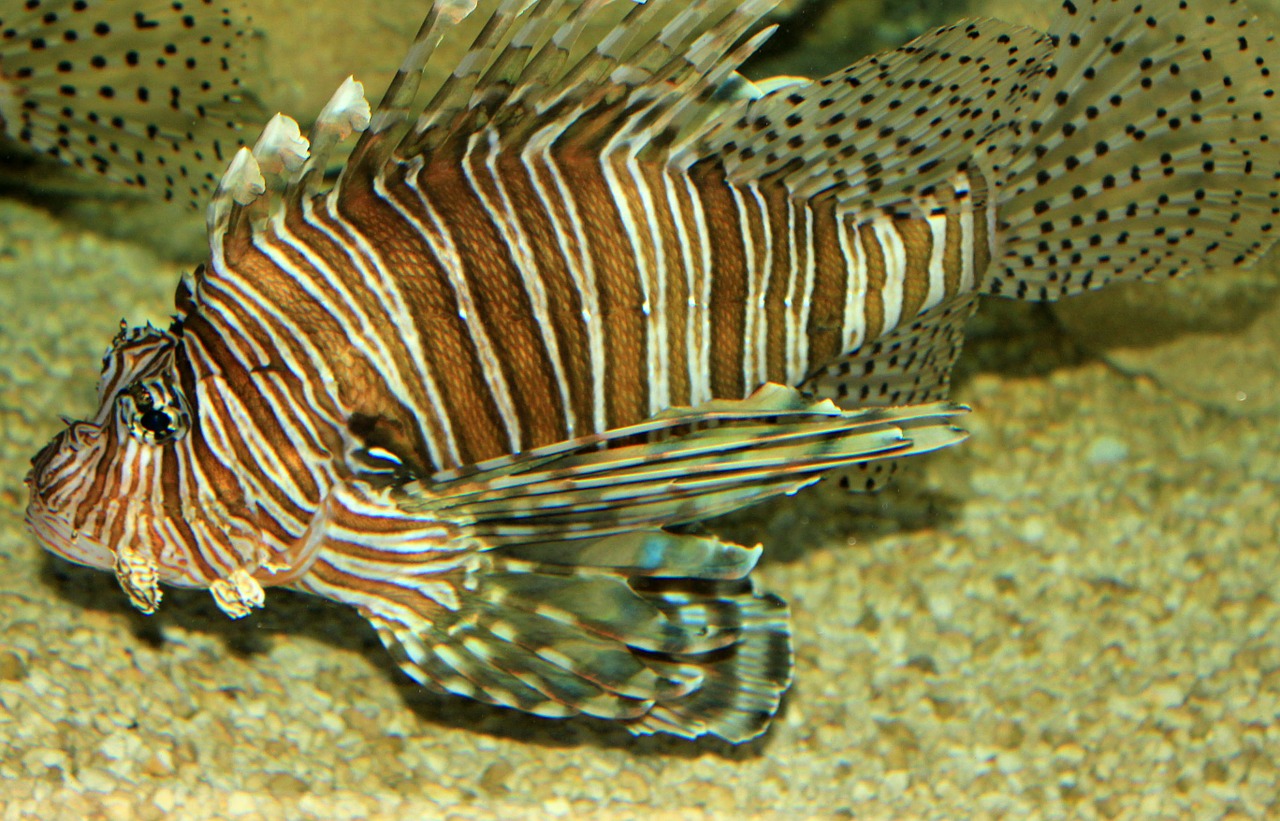Introduction of Poisonous Fish
The poisonous fish’s physical appearance is spiny and either very colorful or very camouflaged. poisonous fish of the group Scorpaena and Synanceia are brown or gray, and camouflaged appearing to look like rocks. Some species like the Stonefish are perfectly cloaked against a rocky water bottom. poisonous fish in the Scorpaena group boast shorter, thicker spines with venom glands larger than those of the Pterois group. Members of the Synanceia group have powerful spines with venom glands that are more developed containing even more intense venom.However, some species have very flashy colors which warn their enemies that they are protected well, poisonous fish. This is the Pterois group is known for having long, slim spines with larger venom glands and a potent sting. For most species, the venom is located in the fish’s spines and the venom is injected when a spine protrudes the flesh of something else-be it prey or predator.
Mode of Life of poisonous fish
poisonous fish primarily swim near the bottom of the body of water which they occupy, which can be any ocean, sea, lake, stream, pond, or river. The venom is usually used as a defensive mechanism towards predators, but some species, including the Lionfish, use their venom as an offensive weapon. Most venomous fish come from Indo-Pacific, off eastern and southern Africa, Australia,Polynesia, the Philippines, Indonesia and southern Japan. About 50,000 people a year suffer from stings, or envenomations, with an array of symptoms like pain, fainting, blisters, fever, convulsions, poisonous fish, breathing trouble and sometimes even death. Most fish are not known to harm humans; however attacks from certain species can be fatal.
Studies on poisonous Fish
Research is being done with fish venom comparable to that of snake venom. Venoms of animals affect the human muscular, nervous, and cardiovascular systems. Scientists are using venoms to research applications for improvements in drugs. This research is not yet fully realized, poisonous fish, however scientists believe it has the potential to treat cancers and other diseases.
Human Injuries
Annually more than 50,000 people are injured from venomous fish. These injuries range from blisters to death. The fish will normally not attack unless they feel harmed and many injuries occur from stepping on the venomous spines. Prevention from venomous fish attacks includes wearing shoes with thicker soles and not taking big steps when traversing through water that may be home to venomous fish. To treat a venomous fish wound, poisonous fish allow blood to flow out of the wound in order to clear venom out of the cut. Remove any spines and clean up the wound so it does not get infected.

